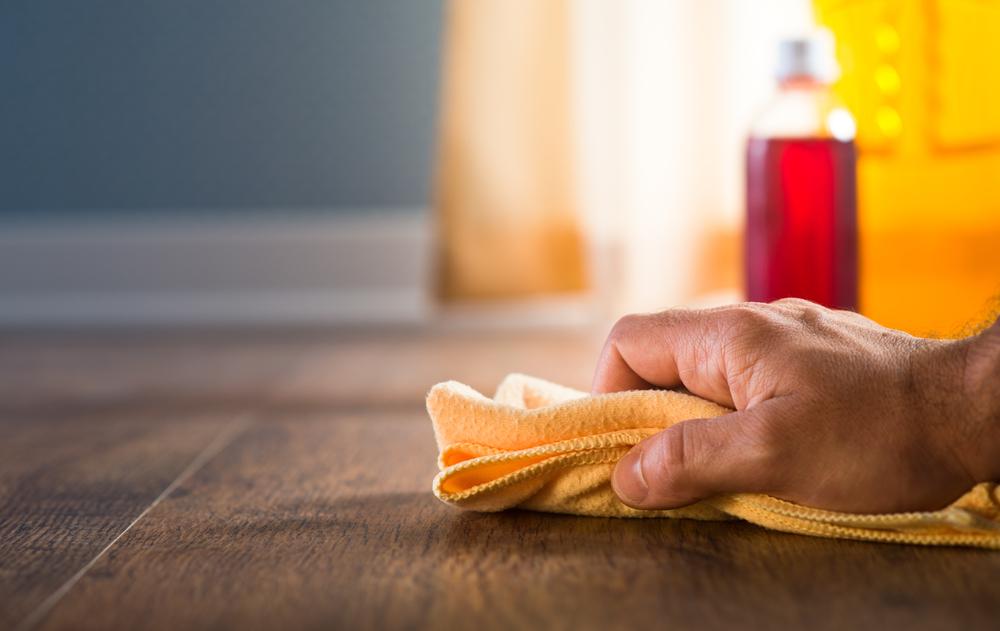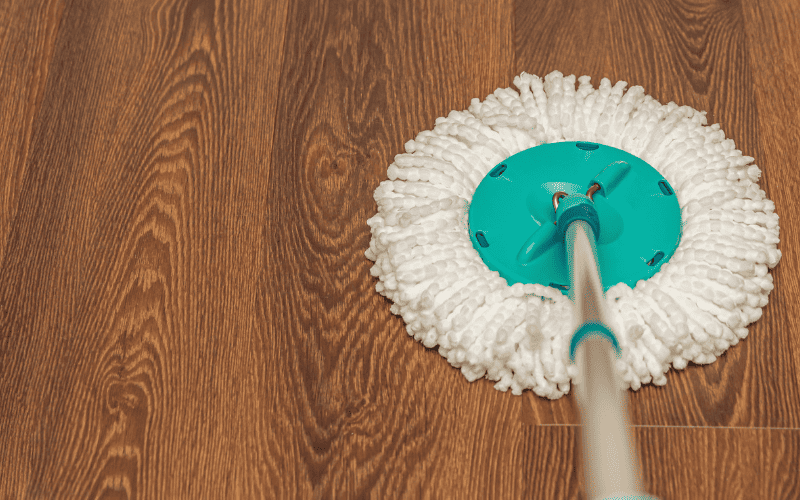Wood floors add a touch of elegance and warmth to any home, but they also require regular maintenance to keep them looking their best. While sealed wood floors are relatively easy to clean, unsealed wood floors present a unique challenge. Without the protective barrier of a sealant, these floors are more susceptible to damage from spills, moisture, and dirt. If you’re faced with the task of cleaning unsealed wood floors, fear not! In this guide, we will walk you through the step-by-step process of effectively and safely cleaning and maintaining your unsealed wood floors, ensuring they remain beautiful for years to come.
Cleaning unsealed wood floors requires a delicate touch and a careful approach. Unlike sealed wood floors, which can withstand moisture to some extent, unsealed wood is more vulnerable to water damage and warping. Therefore, it is crucial to follow the right techniques and use appropriate cleaning solutions to avoid causing any harm. Whether you’re dealing with hardwood, pine, or another type of unsealed wood, this guide will provide you with the knowledge and tools you need to restore and preserve the natural beauty of your floors. So, let’s dive in and discover the secrets to achieving spotless, gleaming unsealed wood floors that will impress your guests and bring a sense of pride to your home.
How to Clean Unsealed Wood Floors:
- Vacuum or sweep the floor to remove any dirt and debris.
- Mix a solution of warm water and mild soap.
- Dip a soft cloth or mop into the solution, wring it out well.
- Gently clean the wood floor, avoiding excessive moisture.
- Dry the floor thoroughly with a clean, dry cloth.
- For stubborn stains, use a mixture of vinegar and water.
- Apply a wood floor cleaner or conditioner to protect the floor surface.

How to Clean Unsealed Wood Floors
Cleaning unsealed wood floors requires a delicate approach to ensure the longevity and beauty of the wood. Unlike sealed wood floors, unsealed ones lack a protective layer, making them more susceptible to damage from moisture, stains, and dirt. To properly clean unsealed wood floors, follow these step-by-step instructions:
Step 1: Remove Loose Dirt and Debris
Before you begin cleaning, it’s important to remove any loose dirt and debris from the surface of the wood floors. This can be done by sweeping with a soft-bristle broom or using a vacuum cleaner with a brush attachment. Be gentle to avoid scratching the wood, and make sure to reach into corners and along baseboards.
For larger debris such as pet hair or crumbs, you can use a dry mop or a microfiber cloth to collect them. Remember to work in the direction of the wood grain to prevent any potential scratches.
Step 2: Prepare a Homemade Wood Floor Cleaner
Creating your own wood floor cleaner is a cost-effective and eco-friendly alternative to store-bought cleaners. Mix equal parts of white vinegar and water in a spray bottle, or use warm water with a few drops of mild dish soap. Avoid using harsh chemicals or excessive moisture as they can damage the wood.
If you prefer a commercial wood floor cleaner, make sure to choose one specifically formulated for unsealed wood floors. Always follow the instructions provided by the manufacturer.
Step 3: Spot Clean Stains
Unsealed wood floors are vulnerable to stains, so it’s important to address them promptly. To spot clean stains, dampen a clean cloth with the homemade wood floor cleaner or the commercial cleaner. Gently rub the stained area in a circular motion, working from the outside towards the center.
If the stain is stubborn and doesn’t come off easily, you can use a soft-bristle brush or a toothbrush to gently scrub the affected area. Be cautious not to scrub too hard, as it can cause further damage to the wood.
Step 4: Mop the Floors
After spot cleaning, it’s time to mop the entire unsealed wood floor. Moisten a mop or a microfiber cloth with the homemade wood floor cleaner or the commercial cleaner, ensuring it’s not dripping wet. Wring out any excess moisture before mopping.
Start at one end of the room and work your way towards the exit, moving in the direction of the wood grain. Avoid using excessive water, as it can seep into the wood and cause swelling or warping. If the mop or cloth becomes dirty, rinse it out and continue mopping.
Step 5: Dry and Polish
Once you’ve finished mopping, it’s crucial to thoroughly dry the unsealed wood floors. Excess moisture can lead to damage, so use a dry mop or a clean, lint-free cloth to remove any remaining moisture.
If you want to give your wood floors an extra shine, you can apply a small amount of wood floor polish. Make sure to choose a polish specifically designed for unsealed wood floors and follow the instructions provided by the manufacturer.
Step 6: Regular Maintenance
To keep your unsealed wood floors looking their best, regular maintenance is key. Avoid using excessive water or harsh chemicals, and promptly clean up any spills or stains. Place doormats at entrances to prevent dirt and grit from being tracked onto the floors.
Additionally, consider using furniture pads or felt protectors under the legs of your furniture to prevent scratches. Lastly, periodically inspect your wood floors for any signs of wear or damage and address them accordingly.
Step 7: Seek Professional Help if Needed
If your unsealed wood floors require extensive cleaning or restoration, it may be best to seek professional help. Professional floor cleaning and refinishing services have the expertise and equipment to handle more challenging situations without causing further damage to the wood.
Remember, regular cleaning and maintenance can help extend the lifespan of your unsealed wood floors, keeping them beautiful and ensuring their durability for years to come.
Frequently Asked Questions
Here are some commonly asked questions about how to clean unsealed wood floors:
1. How do I clean unsealed wood floors?
When cleaning unsealed wood floors, it’s important to avoid excessive moisture or harsh chemicals that can damage the wood. Start by sweeping or vacuuming the floor to remove any dirt or debris. Next, mix a gentle wood floor cleaner with warm water according to the manufacturer’s instructions. Using a damp mop or microfiber cloth, lightly mop the floor, being careful not to saturate the wood. After cleaning, dry the floor thoroughly using a clean towel or mop to prevent water damage.
It’s worth noting that unsealed wood floors are more susceptible to stains and water damage compared to sealed wood floors. Therefore, it’s essential to clean up spills immediately and avoid using excessive amounts of water during cleaning.
2. Can I use vinegar to clean unsealed wood floors?
While vinegar is a popular natural cleaner, it’s not recommended for cleaning unsealed wood floors. Vinegar is acidic and can potentially damage the wood’s finish or cause discoloration. Instead, opt for a mild wood floor cleaner specifically designed for unsealed wood floors. These cleaners are formulated to gently remove dirt and grime without harming the wood’s natural beauty.
If you prefer using natural cleaners, you can try mixing a few drops of mild dish soap with warm water to create a gentle cleaning solution for unsealed wood floors. Just make sure to test the solution in an inconspicuous area first to ensure it doesn’t cause any adverse effects.
3. How often should I clean unsealed wood floors?
The frequency of cleaning unsealed wood floors depends on the amount of foot traffic and general dirt accumulation in your home. Generally, it’s recommended to clean unsealed wood floors once a week or as needed to maintain their appearance and prevent the buildup of dirt and grime. If you have pets or young children, you may need to clean more frequently to remove any potential stains or spills.
It’s important to note that excessive cleaning or using harsh chemicals can strip the natural oils from the wood, leading to dryness and potential damage. Therefore, it’s best to follow a regular cleaning routine while using gentle cleaning solutions.
4. How can I remove stains from unsealed wood floors?
Removing stains from unsealed wood floors can be challenging, as the wood is not protected with a sealant. For fresh spills, immediately blot the stain with a clean, dry cloth to absorb as much liquid as possible. Avoid rubbing the stain, as it can push the liquid deeper into the wood fibers.
If the stain remains, you can try using a small amount of mild dish soap mixed with warm water. Dampen a clean cloth in the soapy solution and gently blot the stained area. Rinse the cloth with clean water and continue blotting until the stain is lifted. Afterward, dry the area thoroughly to prevent water damage.
5. Should I apply a sealant to my unsealed wood floors?
Applying a sealant to unsealed wood floors can help protect the wood from stains, moisture, and daily wear and tear. However, it’s important to note that sealing unsealed wood floors requires careful preparation and maintenance. Before applying a sealant, ensure the wood is clean, dry, and free of any existing finishes.
If you’re not experienced with sealing wood floors, it’s recommended to consult a professional to ensure proper application and to choose the right type of sealant for your specific wood flooring. They can also provide guidance on the necessary maintenance routine to keep your sealed wood floors looking their best.

Remember to always sweep or vacuum your wood floors before cleaning to remove loose debris. Avoid using excessive water or harsh chemicals, as they can penetrate the wood and cause damage. Instead, opt for a mild cleaning solution specifically designed for unsealed wood floors, and use a damp mop or cloth to gently remove any dirt or stains. Additionally, consider using protective mats or pads in high-traffic areas to prevent scratching or wear. By incorporating these simple practices into your cleaning routine, you can ensure that your unsealed wood floors remain beautiful and inviting for generations to come.
- How to Remove Mold From Plywood - April 18, 2024
- How to Get Rid of Green Mold on Wood - April 18, 2024
- How to Prevent Mold on Wood - April 18, 2024